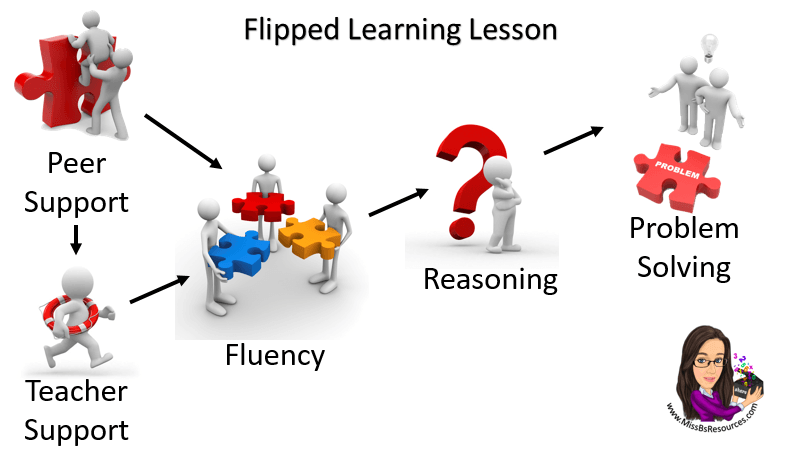 |
| Image from https://www.missbsresources.com |
Some days ago I posted an infography on how flipped classroom can improve our teaching. I received some colleagues' comments on how it can be done. So, since a promise is a promise, here we go with some examples of how to do that in our English classrooms.
This sample post is about flipping a grammar lesson, but you can use it and adapt it whatever lesson you are teaching.
Let's say you are about to teach and explain your students the passive voice.
First thing to do is to get them exposed to some examples of the grammar structure through some reading activity or any other you find appropriate to this aim.
As homework, they will be asked to watch some tutorials, videos or any digital resource you can think of. These digital contents have to be available on the net, or you can posted them on your blog, website or any digital device you use for your classroom. Sharing it by e-mail, Edmodo, etc., with your students can be also a good option.
LOWER LEVEL STUDENTS
HIGHER LEVEL STUDENTS
One of the fantastic and useful things of flipping the classroom is that you can load or post videos / tutorials which can match the different levels you have in classroom. Therefore, you can attend to diversity within the group, and students can set whatever pace they are comfortable with. For example, lower level students can view materials multiple times and higher level students can breeze through everything more quickly.
Next lesson will be used to check if they have understood how the passive voice (or any topic you are teaching) works. Once in the classroom you can form groups of 3/4 (click here to know about grouping in the classroom) whose members will help each other understand the grammatical structure.
| Pic taken from http://libjournal.uncg.edu |
Each group will designate a chairperson and they will discuss for some minutes about the tutorial they watched at home, what they understood and misunderstood. All chairpersons will explain to the classroom their conclusions and the teacher will only listen to them without interrupting.

Then, the teacher, or any student who wants to participate, will clear up all the doubts, using always examples as visual as possible in order to make the classroom more motivating. This activity allows teachers to see exactly where students struggle and adjust the explanation accordingly.
One of the resources that can be used to clarify questions about the grammatical structure is this kind of video
where students, still in groups, try to identify and understand the structure used in different popular TV shows.
Now it's time to start working with practice in the classroom. There will be different activities to work in groups, so students with different levels will help each other. In a traditional classroom, students of various level all have to follow the same pace set by the teacher and this is less than ideal for many of them.
The teacher goes round the classroom and try to help students do the activities, so they can finally understand how the passive voice works through practice.
There are different types of activities which are appropriate for this group work in the classroom
Exercises on line which the teacher can show on the digital board or students can do with their own electronic devices:
Games on line:
Speaking games and Worksheets:
Songs:
You can also used traditional worksheets or workbooks which can be graded according to the levels in your classroom:
For ESL/EFL classes, the flipped classroom approach is essential because it mazimizes the amount of time students speak English in class and minimizes the amount of teacher talk time.
So let's get it started ...